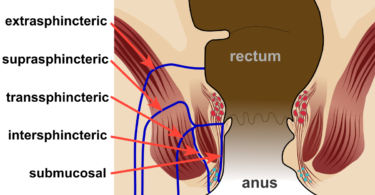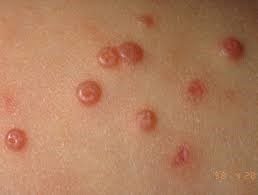Authored By: Dr. Ashok yadav1, Dr. Virendra chauhan 2, Dr. Bhupendra Arya3 , Dr. Garima Choudhary3 , Dr. Iitika Khatri4.
- HOD Dept. Of Practice of Medicine (Hom.) Dr. M.P.K. Homoeopathic Medical College, Hospital and Research Center. Homoeopathy University, Jaipur.
- Prof. Dept. Of Practice of Medicine (Hom.) Dr. M.P.K. Homoeopathic Medical College, Hospital and Research Center. Homoeopathy University, Jaipur.
- MD Scholar, Department of Practice of Medicine (Hom.) , Dr. M.P.K Homoeopathic Medical College, a constituent college of Homoeopathy University, Jaipur.
- MD Scholar, Department of Materia Medica (Hom.) , Dr. M.P.K Homoeopathic Medical College, a constituent college of Homoeopathy University, Jaipur.
Abstract: Gallstone formation is the most common disorder of the biliary tree and it is unusual for the gallbladder to be diseased in the absence of gallstones1. There has been much debate over the role of diet in cholesterol gallstone disease; an increase in dietary cholesterol, fat, total calories and refined carbohydrate or lack of dietary fibre has been implicated1.This article provide information about cholelithiasis along with homoeopathy medicine and important rubric from different repertories like Synthesis Repertory3, J.T. kent Repertory4 , Boericke Repertory5 , Murphy Repertory6, Boger’s repertory 7,Clarke’s clinical repertory8.
Keywords: Cholelithiasis, Homoeopathy
Introduction : Gallstones are quite prevalent in most Western countries. Gallstone formation increases after age 50. In the United States, the third National Health and Nutrition Examination Survey (NHANES III) has revealed an overall prevalence of gallstones of 7.9% in men and 16.6% in women. The prevalence was high in Mexican Americans (8.9% in men, 26.7% in women), intermediate for non-Hispanic whites (8.6% in men, 16.6% in women), and low for African Americans (5.3% in men, 13.9% in women)2.
Gallstones are formed because of abnormal bile composition. They are divided into two major types: cholesterol stones and pigment stones. Cholesterol stones account for more than 90% of all gallstones in Western industrialized countries. Cholesterol gallstones usually contain >50% cholesterol monohydrate plus an admixture of calcium salts, bile pigments, proteins, and fatty acids. Pigment stones are composed primarily of calcium bilirubinate; they contain <20% cholesterol and are classified into “black” and “brown” types, the latter forming secondary to chronic biliary infection2.
Type of gallstone1 :
- Cholesterol gallstones : Cholesterol is held in solution in bile by its association with bile acids and phospholipids in the form of micelles and vesicles. Biliary lipoproteins may also have a role in solubilising cholesterol. In gallstone disease, the liver produces bile that contains an excess of cholesterol because there is either a relative deficiency of bile salts or a relative excess of cholesterol (‘lithogenic’ bile). Abnormalities of bile salt synthesis and circulation, cholesterol secretion and gallbladder function may make production of lithogenic bile more likely.
- Pigment stones : Brown, crumbly pigment stones are almost always the consequence of bacterial or parasitic biliary infection. They are common in the Far East, where infection allows bacterial β-glucuronidase to hydrolyse conjugated bilirubin to its free form, which then precipitates as calcium bilirubinate. The mechanism of black pigment gallstone formation in developed countries is not satisfactorily explained. Haemolysis is important as a contributing factor for the development of black pigment stones that occur in chronic haemolytic disease.
Clinical features : Gallstones usually produce symptoms by causing inflammation or obstruction following their migration into the cystic duct or CBD. The most specific and characteristic symptom of gallstone disease is biliary colic that is a constant and often long-lasting pain (see below). Obstruction of the cystic duct or CBD by a stone produces increased intraluminal pressure and distention of the viscus that cannot be relieved by repetitive biliary contractions. The resultant visceral pain is characteristically a severe, steady ache or fullness in the epigastrium or right upper quadrant (RUQ) of the abdomen with frequent radiation to the interscapular area, right scapula, or shoulder2.
Investigation : Ultrasound is the investigation of choice for diagnosing gallstones. Most stones are diagnosed by trans-abdominal ultrasound, which has more than 92% sensitivity and 99% specificity for gallbladder stones. CT, MRCP and, increasingly, EUS are excellent modalities for detecting complications of gallstones (distal bile duct stone or gallbladder empyema) but are inferior to ultrasound in defining their presence in the gallbladder. When recurrent attacks of otherwise unexplained acute pancreatitis occur, they may result from ‘microlithiasis’ in the gallbladder or common bile duct and are best assessed by EUS1.
Complications 1:
- Empyema of the gallbladder
- Porcelain gallbladder
- Choledocholithiasis
- Acute pancreatitis
- Fistulae from gallbladder to duodenum/colon
- Pressure on/inflammation of the common hepatic duct by a gallstone in the cystic duct (Mirizzi’s syndrome)
- Gallstone ileus
- Cancer of the gallbladder
Rubrics in synthesis repertory related to cholelithiasis 3:
- Abdomen, gallstones: (Pain – liver – colic) ARS, aur, bapt, bell, berb, bold, Bry, calc, calc-f, card-m, Cham, chel, chin, chion, chlf, chol, coloc, cupr, dig, dios, eberth, euon, euon-a, euonin, fab, fel, ferr-s, fuma-ac, gels, guat, hed, Hydr, jug-c, lach, Lept, lith-c, lob, lyc, mag-p, mag-s, mand, mang, MERC, merc-d, myric, morg-g, morg-p, nat-s, nat-sal, nit-s-d, nux-v, Phos,podo, ptel, sang,sulph, tarax, thlas, verat, vichy-g.
- Abdomen, gallstone colic: (see pain – liver –colic) ars, atro, atro-s, Bapt, BELL, BERB, Bry, cal-bil, Calc, CARD-M, Cham, Chel, CHIN, Chion, Chlf, Chlol, colch, Coloc, cupr, dig, Dios, Fab, gels, hep, hydr,Ip, Iris, kali-ar, Kali-bi, Kali-c, Lach, laur, Lept, Lith-c, LYC, mag-bcit, Mag-m,Mag-s, mand, mang, menth, merc, Merc-d,morph-act, NAT-S, Nux-v, op, podo, puls, rhus-t,ric, Sep, sil, staph, sulph, tab, ter, trios,VERAT.
Rubrics in Kent’s repertory related to cholelithiasis 4:
- Abdomen, pain , liver, colic, gallstones: Ars, bapt, Bell, Berb, bry, calc, Card-m, cham, chel, Chin, chion, chlf, chlol, cupr, dig, dios, ip, iris, kali-ar, kali-bi, kali-c, lach, laur, lept, lith, Lyc, mang, merc, Nat-s, nux-v, podo, puls, rhus-t, sep, Verat.
Rubrics in Boericke Repertory related to cholelithiasis 5:
- Abdomen, gall-bladder – biliary calculi (cholelithiasis) – Aur.; Bapt.; Berb.v.; Bolod.; Bry.; Cal.c.; Card.m.; Chel.; Chionanth.; Cholest.; Cinch.; Diosc.; Fel tauri; Ferr.s.; Gels.; Hydr.; Jug.c.; Lach.; Lept.; Myr.; Nux-v.; Pichi.; Pod.; Ptel.; Tarax.
- Abdomen, gall-bladder, Biliary colic – Ars.; Atrop. sul.; Bell.; Berb.v.; Calc.c.; Card. m.; Chionanth.; Cinch.; Col.; Dig.; Diosc.; Gels.; Hydr.; Ipec.; Lyc.; Morph. acet.; Nux v.; Op.; Tereb.
Rubrics in Murphy’s repertory related to cholelithiasis 6 :
- Liver, gallstone, colic pain from – am-m, alum, ars, aur, bapt, BELL, BERB, bry, CALC, CARD-M, cham, chel, CHIN, chion, CHOL, COLOC, cupr, dig, DIOS, euon, fel, ferr-s, gels, hep, hydr, ip, iris, jug-c, kali-ar, kali-bi, kali-c, lach, laur, lept, lith, LYC, mag-p, mang, merc, merc-d, MORG, myric, NAT-S, nux-v, op, osm, phos, podo, puls, rhus-t, sang, sep, sulph, tab, tarax, ter, thuj, VERAT.
Rubrics Boger’s repertory related to cholelithiasis 7 :
- Hypochondria, gallstones and colic: Ars, bell, Calc-c, card-m, chel, Chin, colo, hep, lach, lyco, Mag-m, Merc-d, Nat-s, nux-v, Pod, sil, Sul, terb, ver-a.
Rubrics in Clarke’s clinical repertory related to cholelithiasis 8:
- Clinical, gall-stones: berb, calc, card-b, chel, chlf, chol, euonin, euon-a, fel, lach, lith-c, lob, mang, nit-s-d, nux-v, fab, podo, ptel, tarax, thlaspi, vichy-g.
Homoeopathic management 5:
- Belladonna : Abdomen distended, hot. Pain as if clutched by a hand; worse, jar, pressure. Cutting pain across; stitches in left side of abdomen, when coughing, sneezing, or touching it. Extreme sensitiveness to touch, bed-clothes, etc
- Berberis vulgaris : Stitches in region of gall-bladder; worse, pressure, extending to stomach. Catarrh of the gall-bladder with constipation and yellow complexion. Stitching pain in front of kidneys extending to liver, spleen, stomach, groins, Poupart’s ligament. Sticking deep in ilium.
- Chelidonium: Jaundice due to hepatic and gall-bladder obstruction. Gall-colic. Distention. Fermentation and sluggish bowels. Constriction across, as by a string. Liver enlarged. Gallstones
- China : Much flatulent colic; better bending double. Tympanitic abdomen. Pain in right hypochondrium. Gall-stone colic (Triumfetta semitriloba). Liver and spleen swollen and enlarged. Jaundice. Internal coldness of stomach and abdomen. Gastro-duodenal catarrh.
- Chionanthus : Aching in umbilical region, griping. Feels as if a string were tied in a “slip-knot” around intestines which was suddenly drawn tight and then gradually loosened. Sore; enlarged, with jaundice and constipation. Clay-colored stool, also soft, yellow and pasty. Tongue heavily coated. No appetite. Bilious colic. Hepatic region tender.
- Lycopodium : Immediately after a light meal, abdomen is bloated, full. Constant sense of fermentation in abdomen, like yeast working; upper left side. Hernia, right side. Liver sensitive. Brown spots on abdomen. Dropsy, due to hepatic disease. Hepatitis, atrophic from of nutmeg liver. Pain shooting across lower abdomen from right to left.
- Merc.Sol : Stabbing pain, with chilliness. Boring pain in right groin. Flatulent distention, with pain. Liver enlarged; sore to touch, indurated. Jaundice. Bile secreted deficiently.
- Nux-vomica : –Bruised soreness of abdominal walls (Apis; Sulph). Flatulent distension, with spasmodic colic. Colic from uncovering. Liver engorged, with stitches and soreness. Colic, with upward pressure, causing short breath, and desire for stool. Weakness of abdominal ring region. Strangulated hernia (Op). Forcing in lower abdomen towards genitals.
- Phosphorus : eels cold (Caps). Sharp, cutting pains. A very weak, empty, gone sensation felt in whole abdominal cavity. Liver congested. Acute hepatitis. Fatty degeneration (Carbon tetrachloride; Ars. Chlorof). Jaundice. Pancreatic disease. Large, yellow spots on abdomen.
- Veratrum Album : Sinking and empty feeling. Cold feeling in stomach and abdomen. Pain in abdomen preceding stool. Cramps, knotting abdomen and legs. Sensation as if hernia would protrude (Nux). Abdomen sensitive to pressure, swollen with terrible colic.
Reference:
- Davidson Stanley. Principles & Practice of Medicine. 22nd ed. Philadelphia: Elsevier; 2014.
- Kasper, D. L., Fauci, A. S., Hauser, S. L., Longo, D. L. 1., Jameson, J. L., & Loscalzo, J. (2015). Harrison’s principles of internal medicine (19th edition.). New York: McGraw Hill Education. principles of internal medicine. 18th ed. New York: McGraw Hill, HealthProfessions Division; 2012.
- Schroyens Frederik. Augmented Clinical Synthesis. 9.1 ed. New Delhi: B.Jain Publishers(P)Ltd; 2011
- Kent J.T, Repertory of the Homoeopathic Materia Medica, New Delhi: B.Jain Publishers(P)Ltd; 2015
- Boericke William. New Manual Of Homoeopathic Materia Medica, New Delhi: B. Jain Publishers(P) Ltd; 2011
- Murphy Robin. Lotus MateriaMedica, 2nd revised edition. New Delhi: B.JainPublishers(P) Ltd; 2006.
- Cyrus Maxwel Bogar ; Bogar Boenninghausen Characterstic Repertory ; B.Jain Publishers (p) ; New Delhi.
- Clarke JH. A Dictionary of Homoeopathic Medicines. 3rded. New Delhi; B Jain (P)Ltd; Volume 3, 2005





